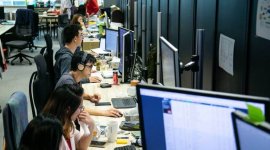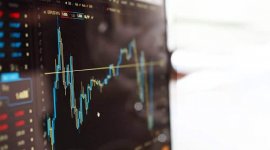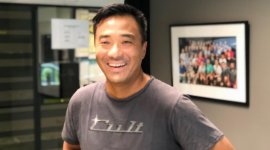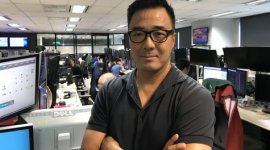A Day in the Life of a Grasshopper Quant
Oct 16, 2023
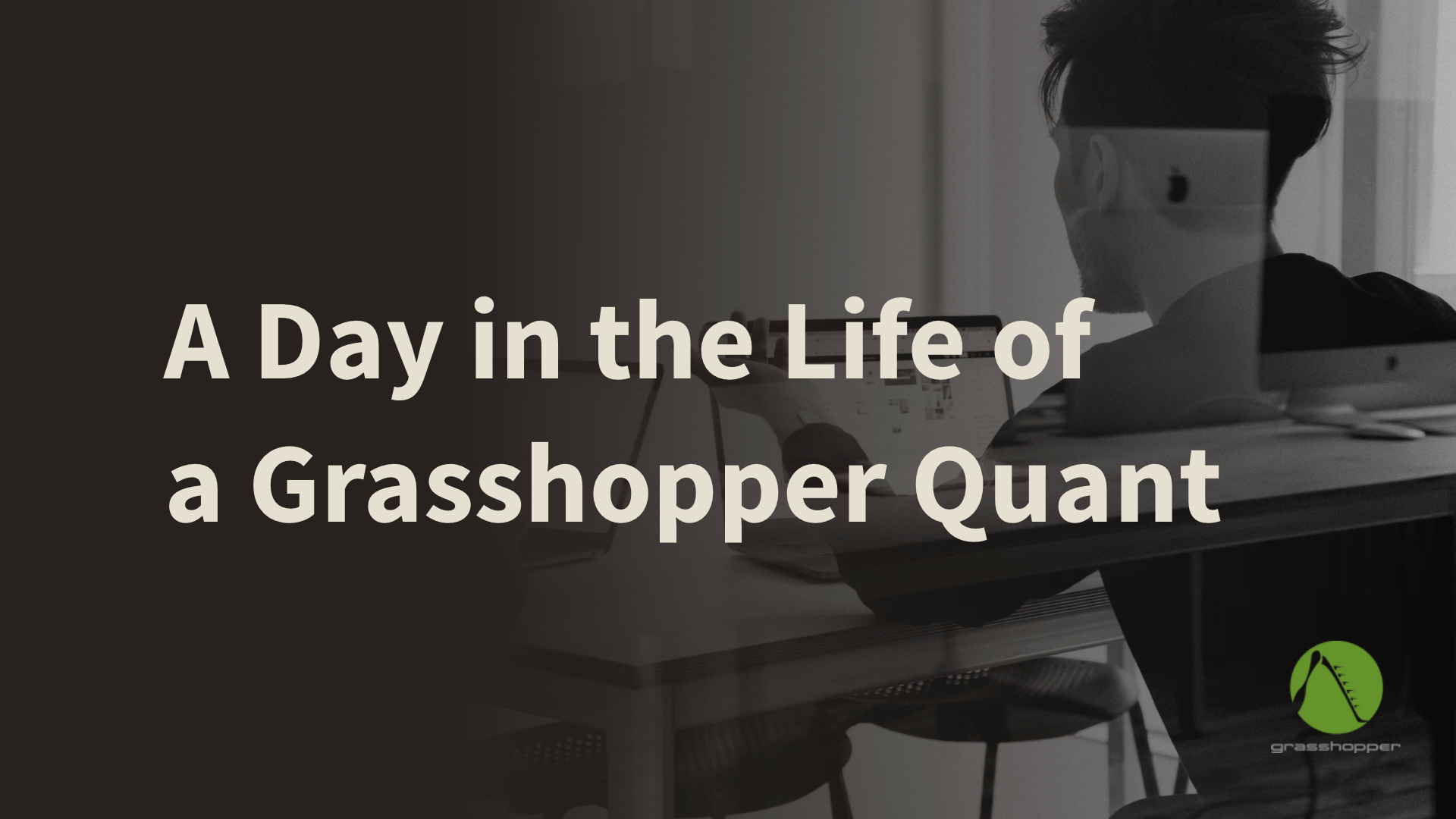
Hi, I’m Duncan!
I’m not your typical Quant with a PhD in math or physics or computer science
I taught myself programming and math after my bachelor graduation for 1.5 months and broke into the industry by passing a technical test with an HFT trading firm that only hired PhDs back then
Instead of being a PhD, I only double majored in Economics and Politics, and double minored in Theater Arts and Philosophy (but I graduated a full year early with honors from a decent school, which helped my application). I ended up staying with the firm for 3 years and began leading several PhDs before pursuing a proper technical MSc degree in Financial Engineering.
Now with almost 10 years of experience, I am working with the systematic trading team at Grasshopper to build scalable Quant technologies to size up trading revenues and establish presences across more exchanges globally.
In this post, I’ll share my typical day as a Quant at Grasshopper, and share some suggestions for juniors looking to work or working in the industry.
Here’s my daily routine
In the morning
Amongst the Asian exchanges we trade, Japan opens the earliest in our time zone at 8 AM (GMT+8).
I usually arrive at the office 30-60 minutes before the market opens to perform the final checks on our production systems.
Assuming no critical issues were found in the systems during my commute, I start my day at the office pantry: wash my hands and make myself a light breakfast.
This is usually my peaceful time, as there are very few people and trading sounds. This lets me enjoy breakfast at my desk while going through emails and Slack. After finishing breakfast, I begin looking into the outputs from my overnight research runs (ie. param search, data generation…).
In the afternoon
For lunch, I usually prioritize convenience. The benefit of working in the CBD is that there are lots of options available. But in reality, I usually get take out food from the same few places, ranging from hawkers to restaurants. Moreover, I tend to go out before 11:30 AM to beat the crowd, as I find queuing to be an inefficient use of time. If you’re wondering why I don’t order delivery, it’s because going out to buy take out is another way for me to take a short break from work and breathe some fresh air.
After lunch, I quickly check on my on-going and back-burner tasks; then go into my “producing” mode. The majority of this work is performed using programming and statistics, where I leverage quantitative approaches to either verify hypotheses or automate mundane tasks.
If you ask me whether being a Quant is fun, I would say “yes”. This is because these tasks are like puzzles; but better. Unlike sudokus which only give you immediate gratification upon completion, Quant puzzles also offer longer term financial rewards via bonuses and compensation.
However, there are downsides too. Continuously solving puzzles can be mentally draining; I usually take short breaks throughout the day. These include refilling water, snacking at the pantry, catching up with colleagues or even just going outside for a walk.
After hours
One of the benefits of being a Quant is that overtime is not expected. But my typical day doesn’t quite end the moment I leave the office, in a good and voluntary way. As we process tens to hundreds of millions of data per day, some programs might take more than several hours to run. When I work on a rapid prototyping project that requires a long runtime, I usually try to kick off a follow-up run in the evening, so that I have actionable data to work on by the next morning.
Challenges and rewards
We’re exposed to a wide range of profitable strategies from different latency requirements.
Between rebalancing portfolios daily and nanosecond space per data packet signals, I find the latter to be more challenging because of the precision required. When you optimize systems and signals to the nanosecond, you become ultra responsive. However, this also means you are able to make a lot more mistakes at a significantly faster rate. So the attention to detail required is significantly higher. On the bright side, the rewards from these types of operations are usually more consistent (ie. positive PnL 99% of the days).
What are some common mistakes rookies make when trying to enter trading? And what advice would you give to avoid/fix this?
The main difference between a junior vs a senior trader is the time those two traders would take to achieve the same objective.
A junior can almost always achieve the same outputs produced by a senior. This is because the quantitative approach is scientific, and science is bounded by laws. An apple will always accelerate at 9.8 m/s2, whether Newton discovered it in 1666 or you discovered it today (ceteris paribus). However, due to the lack of experience and knowledge, the junior is likely to take more wrong turns due to wrong assumptions, so he/she might run out of patience or time. Whereas a senior trader might be able to go straight to the heart of the matter much quicker. If you haven’t already read it, check out The Ship Repair Man story, it explains this concept very well!
We tend to hire smart graduates, and most juniors I’ve met tend to believe a little too much in themselves and ask too few questions from people who might know the right turns to take. When I work with juniors, besides repurposing their technical skills from an academic setting into a market setting, I would train them to ask the right questions at the right time.
Finally, self-learning is always important as it keeps you up to date with the latest market dynamics and sharpens your market intuitions. However, do not only read about finance, but also topics from other disciplines. You’ll never know when something seemingly unrelated could one day become relevant to your research. For example, could the gravitational pull between planets be used to model the relationship between different stocks?
Recommended resources
I like to read news/articles from CNBC and Bloomberg (some articles can take up to 40 min to read), charts from investing.com and Yahoo finance. There isn’t a single source for research papers but I do find arXiv handy from time to time.
Outside of work, I enjoy reading biographies, scientific blogs/reports (mostly on Astrophysics, ML-CV, RL, and Robotics).
For fun TVs/Movies, I recommend Billions (S1), The Big Short, and The Wolf of Wall Street. I’ve actually met Belford in person. I don’t usually get excited about meeting celebrities, so this was quite a normal experience for me and not as cinematic as DiCaprio’s depiction from the movie.


